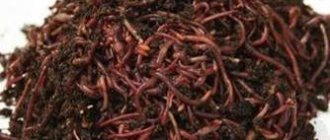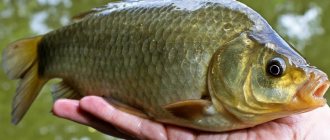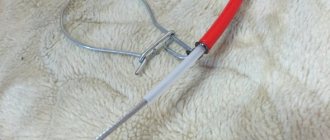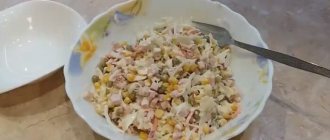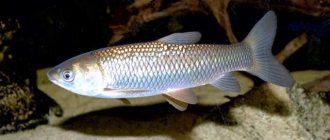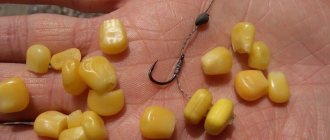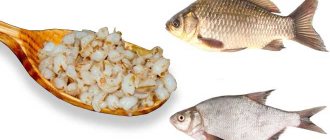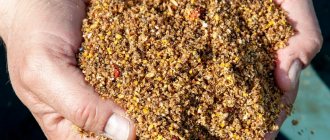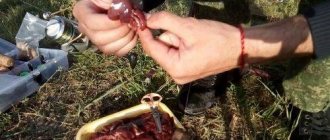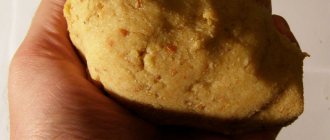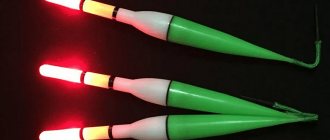Advantages of fishing with corn. What kind of fish can you catch? How to prepare your own corn for fishing. We catch carp, crucian carp and carp using corn.
Fans of float fishing, despite the large selection of options for vegetable baits, especially highlight canned corn. Why? This is due to the fact that peaceful fish, especially trophy specimens, are excellently caught with this type of bait.
IMPORTANT! Canned or steamed corn can be used not only as bait, but also as groundbait.
What kind of fish can be caught using canned corn?
Almost all peaceful fish that are found in water bodies with this type of bait of plant origin Most often, anglers manage to catch carp, chub, carp, bream, crucian carp, large roach, and tench using corn. In addition, some predatory fish species, such as pike perch, may be tempted by these aromatic grains, but not large ones.
Artificial corn
This term refers to the use of inedible imitation corn grains. These baits are made from synthetic plastics. In fact, this is a container for chemicals designed to attract fish and provoke them to bite. The advantages of such bait include:
- reusable;
- instant entry of the nozzle into the process;
- luring fish after entering the water;
Artificial corn is available in two forms: in a jar with flavoring and without odor. In the second case, the fisherman himself chooses which flavor to impregnate the artificial bait for the best result. After using scented bait, it is recommended to immediately place it back into the scent jar.
Benefits of Corn
Among the advantages of this nozzle are:
- Attractive and persistent smell and color;
- The grains do not fly off after being placed on the hook;
- If desired, you can easily and quickly prepare the bait in the required quantity yourself (if you need to feed the fishing spot);
- You can fish using corn in still water or in the current;
- Canned corn is available in grocery stores, and Bonduelle is the best choice.
If you plan to buy corn, do not save money; choose only proven and high-quality products, since cheap canned corn may turn out to be overgrown and too soft.

Corn – fishing attachment
: 24.04.2011
Corn grains, along with earthworms and maggots, are the most common baits for fishing on rivers and lakes.
Most fish in our reservoirs are not indifferent to tasty corn, with a good smell and bright color.
Its most important fans are, perhaps, carp and crucian carp, but bream, roach, tench, chub, silver carp, silver bream, ram and rudd are also not averse to eating this grain. Even predatory fish are sometimes not indifferent to these bright grains.
The most popular among fishermen, due to its availability, is canned corn, but boiled ripe grains and fresh milk corn are also widely used.
Corn is a vegetable attachment with excellent characteristics:
- has a wonderful smell, color and taste that fish like so much;
- always available in almost any store;
- holds perfectly on the hook and on the hair;
- you can use various flavors with it (which gives ample opportunities in feeding fish);
- when cooking grains, you can achieve varying degrees of softness;
- low cost of such a nozzle.
When fishing on a feeder, you can use corn in the classic way, hooking it in different ways, as well as using hair rigging.
Corn grains are also an excellent additive to the bait that fills the feeder feeder.
Based on this cereal, various fishing baits and baits are produced. Cereals from it are an excellent additive to many baits.
And from corn flour you can cook hominy for fishing.
The simplest and most popular recipe: “How to cook hominy for fishing,” without dirty dishes after cooking, we have already described on the pages of our website feederist.ru. This type of hominy can be used both as a bait on a hook and as a filler when fishing with a spring or on a “method” type feeder.
Which corn to choose as a bait for fishing?
If we talk about corn beans, then there are the following options: self-cooked grains, canned and young milk grains. Let's look at each type in more detail.
Homemade boiled corn
Despite the fact that regular stores and specialized fishing shops have a wide selection of ready-made corn, many fishermen continue to cook, soak and steam these grains themselves. And this of course makes sense.
Firstly, there is a category of fishermen who like to completely control the process of preparing bait and bait, and prepare for fishing long before the actual fishing.
Secondly, many are not satisfied with the quality of canned beans, which are often cut, crushed, small or overcooked. And when cooking it yourself, you can give the grains the necessary hardness (softness) and add your most effective concentrator or dye. In addition, before cooking, you can select large grains for bait, and leave small ones for bait.
Well, thirdly, when using corn to feed carp, for example, you have to use not such a small amount of it. And if the feeding of the fishing spot lasts for more than one day, then a bucket of boiled corn can go away calmly.
There are many cooking recipes. But the general principle is that the grains must be soaked before cooking. Such fermentation can take from one to three days. Moreover, you can soak it in plain water or, for example, in hemp starter.
After the grains swell, the cooking process follows. To do this, it is better to use an enameled or stainless steel container. The water in which the corn is boiled can be pre-sweetened with sugar or honey. The cooking process lasts from 30 minutes to an hour. Our corn should be quite soft, but not overcooked. After this, we leave it in the water for another 1-2 days.
At this stage, you can add flavorings to the water. During this time, the grains will acquire the necessary aroma and become more attractive to fish.
In the selection of fragrances, it is difficult to advise anything specifically. Local fish tastes and the time of year also play a role here. The most popular are the smells of vanilla, honey, banana and adding a sweetish taste to the nozzle.
Few fishermen know that carp cannot crush grains with their internal teeth. And his intestines are not able to digest the tough skin of cereals. There are even cases where when a carp ate raw grains that were not completely swollen, it died from intestinal rupture. It was precisely because the nozzle “reached” already in his stomach and, swelling, led to rupture.
The process of infusion of corn grains brings them to full readiness. The lactic acid that begins to form in such a sweet solution softens the corn.
And it has been noted more than once that such a sour, unpleasant odor for the fisherman is even liked by the fish. Many people deliberately bring the grains to “sour” because they are sure that this is the taste that will attract fish more.
But the main thing here is not to overdo it and rely more on your experience and instinct.
If you cook the grains for a long time, this will lead to them boiling and turning into porridge. This type of porridge can be used to add to bait. If you have welded too much bait and the infusion process has come to an end, then you can freeze the grains for storage until your next fishing trip.
Is it necessary for the hook point to stick out from the bait or bait?
Let's touch on a little about the method of attaching corn to a hair or hook.
So should we hide the hook tip or not? This is often asked by fishermen who are mastering feeder fishing. For them we will answer: no, it is not necessary.
The corn skin is quite dense and for better hooking of fish it is good to leave the tip of the hook bare. And you don’t have to be afraid that the fish will prick itself on the hook’s tip and leave.
Numerous experiences of fishermen have boiled down to the fact that the sting is brought out almost when using any attachments and baits.
When fishing,
the number and size of grains on the hook depends on the size of the hook itself and, accordingly, the size of the intended fish.
For example, when fishing for carp on a feeder, up to 5-8 grains of bait can fit on a hook with numbers from No. 4 to No. 8. Moreover, it is better to use different grains, both large and small, and they must also be planted unevenly, threading through the center or edge of the grain. Such a bait will look more natural and will not arouse suspicion in the fish.
When catching smaller fish, the hook size decreases and, accordingly, the number of grains decreases. For example, when fishing for crucian carp, two grains of corn are planted , which can also be supported with boiled pearl barley. This will hold the bait longer, since crucian carp likes to savor the grains for a long time, sucking them.
When fishing for roach or silver bream with a feeder, one grain is generally placed on the hook. Moreover, the exposed point of the hook can be made larger. Such a fish, with its sharp bites, often gets caught in the lower part of the oral cavity.
A sandwich - a combination of corn with a worm or maggot - also gives an excellent effect.
If after cooking the grains are not soft enough and it is difficult to thread them with a crochet hook, then hair installation can help. Corn on a hair for our reservoirs may turn out to be more productive than even fishing with boilies. A needle for piercing boilies can easily cope with corn grains.
Canned corn for feeder fishing
Ready-made edible corn in cans has become very popular in recent years. The banks of rivers, especially in the southern regions, are dotted with these tin signs of the presence of fishermen. What could be more convenient? A ready-made bait for a hook is always at hand and is quite catchy.
As for food-grade regular corn, which is sold in our supermarkets, it is all different. And in size, and in hardness and in the integrity of the grains themselves. The type of corn used, the technological process of preparation and the age of the grains themselves before cooking play a role here.
Canned corn from the same company, purchased yesterday and tomorrow, may differ significantly.
This is understandable. After all, it is intended for food, and the manufacturer primarily cares about its taste than about its use on a fishing hook.
Canned corn from some manufacturers is generally tasteless, tough and unpleasant for people, not to mention its ability to attract fish.
In fishing stores you can find special canned corn for bait. Moreover, it already comes with a certain aroma and color. As a rule, such jars contain whole grains of the same size and are easy to use.
It includes additional components that prevent the product from quickly disappearing. Some fishermen try to use only this bait. But as practice shows, there is not much difference in bite between this special corn, food-grade corn or home-cooked corn.
Among food canned corn, the most popular are Bonduelle and Vernet . This corn is great for catching fish. And the degree of softness is suitable for use as a nozzle.
But batch from batch can differ significantly. Sometimes, in order to find a suitable whole grain for the nozzle, you have to sort through half the jar. There is a large percentage of cut grains. But, despite this, the pleasant smell and sweetish taste do their job well when fishing.
There is a reasonable opinion that Bonduelle in glass jars has better quality characteristics than in tin jars, and is more suitable as an attachment.
You can also add the desired flavoring to the jar attachment. In the summer, more berry, sweet flavors are used (strawberry, banana, vanilla...), and in the fall it is advisable to switch to the smell characteristic of bait (shrimp, caviar, crayfish...)
For example, a good effect is obtained if you pour a bag of vanilla sugar into a jar. Or, before casting, drop the grains into an attractant with a certain smell. But this is a matter of taste and experience.
Canned corn can also be used to add to bait during feeder fishing. Several grains are added to the finished bait for the feeder. Scattered along the bottom, it will force our fish to linger in place.
Don't forget that syrup from a jar has a great smell and taste. It can also be added to our bait.
The bait from canned corn is made in the same way as in the previous case with boiled corn. You can put it on hair and on a hook. Also, while fishing, you can and should experiment with “sandwiches”, adding a worm or larvae to the bait.
When the first mature young corn appears, it is time to use it raw for fishing. Moreover, large, whole, still soft milk grains are selected.
Source: https://feederist.ru/prikormki-i-nazhivki/27-kukuruza-
How to set the bait?
It should be noted that if the bait is not placed correctly on the hook, the number of bites can be sharply reduced. Therefore, despite the simplicity of the process, we suggest considering several options for placing corn on a hook.
So, the method of planting depends on what kind of corn we use, namely purchased or home-cooked. This is due to the fact that the density of the grains will be different, and this is an important point that affects the bite.
Experienced fishermen mostly prepare the bait themselves, since in this case they can:
- Personally check the degree of grain hardness, which is especially important if you plan to fish in the current and need to throw the bait over a distance of more than 25 meters;
- If desired, you can select the required number of large grains that will be used as bait, and add the rest to the bait that will be used to feed the chosen fishing spot;
- If necessary, during the preparation of grains, you can add a flavoring agent, which will significantly increase the attractiveness and effectiveness of the attachment;
After cooking, it is important to preserve the bait; to do this, it is recommended to drain the water immediately after cooking and scatter the grains on paper; the absence of water will prevent souring.
The finished bait can be attached to a hook in several ways; in fact, every experienced fisherman has his own secret. Let's look at the most commonly used options that are in greatest demand:
- Planting several grains at the same time. The hook breaks through the grain closer to the edge, after which it moves along the fore-end, the result should be a chain of grains. The tip can be left slightly open. A similar method is used when catching large fish, for example: carp or carp, but bites may also occur for crucian carp;
- We plant one seed. The method is especially effective when fishing for roach and crucian carp. The grain is completely pierced with a hook in the center so that the sting appears, after which the sting is hidden in the bait. Note that with this type of fishing, the hooks selected are not large, it is important that they are 80% hidden in the bait;
- Sandwich, it is envisaged that in addition to corn, a second attachment will be used, for example, a dung worm, pearl barley, bloodworm. A similar method is used by fishermen during periods of poor bite. A combination consisting of maggot, pasta and corn works great for large fish.
In addition to these three options for placing corn on a hook, there are one more, but it provides that the equipment will have a hairline installation. The method is quite interesting and effective.
To implement it, you will need to tie a small piece of fishing line or braided cord (length 1-1.5 cm) folded in half to the hook above the bend. To secure the grain on a piece, you will need a special needle for piercing boilies or a thin shoe hook.
Fitting is carried out in the following way: the grains are pierced in the center with a needle, after which the loop is grabbed with a hook, and the grains are carefully put on the hair. To prevent the bait from flying off during casting, a silicone stopper is used, which is threaded through the loop and pressed against one of the grains.
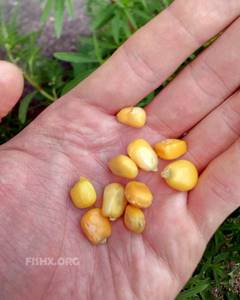
Selecting Corn Bait
Many fishermen, who first learned about this bait, ask the question: “Which corn to choose for bait?” The choice of product sometimes depends on the fishing conditions or reservoir, but more often on the personal preferences of the fisherman. Some people are quite happy with store-bought canned products, while others prefer to prepare their own catchable bait.
So, what types of corn kernels are used as bait? There are several of them:
- Sweet canned corn. The grains have a bright, rich color, pleasant taste, and delicate aroma. They hold the hook well and are less susceptible to being knocked down by small fish.
- Boiled grains. No worse than the first option. The only drawback is the long process of preparing the product. The kernels must first be soaked for 2-3 days, then simmered over low heat for about 1 hour. The finished product can be flavored with a few drops of hemp oil or other aromatics.
- Steamed kernels. The grains are pre-soaked for one day, after which they are poured into a thermos and poured with boiling water. You can also add attractants moderately to the thermos. In just 4 hours the product will be completely ready for fishing.
- Fermented or "drunk" corn. The longest process of preparing bait, taking up to 5 days. The kernels are poured with cold water and left to urinate for one day. Next, add sugar to the container and cook the mixture for about 1 hour. After time, the mixture is cooled, baker's yeast is added and poured into glass bottles. Sunflower oil is poured on top, forming an oil plug at least 5 mm thick. After all manipulations, the bottles are placed in a warm room for 5-6 days.

In addition to the listed types, there is also artificial corn, which is a silicone flavored imitation. In some cases, such bait works even better than a natural product.
Features of catching carp on corn
So, carp is one of the very cautious inhabitants of the reservoir (description of carp). To catch it, you can use bait of various types, but in the summer and closer to autumn it is best caught on corn .
However, there are a number of things to consider when planning to catch these fish using the type of bait in question. The most important condition is that the grains that are placed on the hook must be fresh and whole.
For fishing, you need to select grains as large as possible. If you don’t have time to prepare the attachment yourself, you can purchase it at the grocery store; as noted, a great option is to buy a jar of Bonduelle. If you decide to prepare your own corn for fishing, keep in mind that carp loves boiled bait; undercooked, too hard corn is not suitable for fishing.
IMPORTANT! For fishing, you can use fresh corn (milk corn) in its raw form, but carp weighing up to two kilograms will peck on such a bait.
As for the gear, the best choice is a float rod, the length of which in each case is selected individually, taking into account the conditions of the upcoming fishing. The only thing you need to do is choose the right hook number, since it should be hidden as much as possible in the bait.
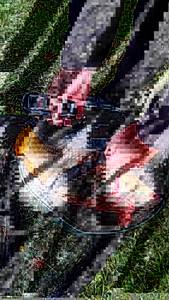
Cooking corn
Corn attraction
How much corn do you need for fishing?
Much depends on how and for what it is used, but as a guide - 1 kg of dry grain for 6 hours of active fishing is enough. A couple of handfuls of corn may be enough for bait.
The entire process of cooking corn consists of three stages:
- soaking dry grain (rehydration);
- boiling soaked corn;
- corn attraction and shelf life extension.
Before soaking, dry corn is thoroughly washed and then filled with cold water. The optimal time is 36 hours at a temperature of 18-20 °C. At a higher water temperature, the soaking time is reduced to a day.
Then, the soaked corn is poured with a large amount of water and put on fire. Cooking time is approximately 40 minutes, but it can vary significantly depending on the type of grain. Therefore, the process must be controlled.
To speed up cooking, add baking soda to the water - 1/2 teaspoon per liter of water.
When the consistency of the grain becomes soft enough, the fire is turned off and the excess water is drained. The corn is spread over the area (maybe on a towel) and dried a little.
Subtleties of catching carp on corn
The carp lives in rivers and lakes, and can be found in still water or on a current. This fish is very strong and cautious, so when planning to catch carp, you need to responsibly prepare your gear and bait, otherwise you won’t have to count on catching a trophy.
For fishing, you should select grains of the largest possible size (as for carp, carp is a cultivated form of carp), they will attract large fish and remain uninteresting to the small inhabitants of the reservoir. The bait should be soft; the carp can spit out the hard bait when biting, without catching its fleshy lip on the sharp sting of the hook.
If during fishing after throwing the bait there are no bites for half an hour, it is recommended to change the nozzle. Note that corn, when kept in water for a long time, loses its attractive properties for fish .
For catching carp, an excellent solution would be to use purchased corn, which is offered in assortment in grocery stores. Its main advantage is the presence of an expressive smell.
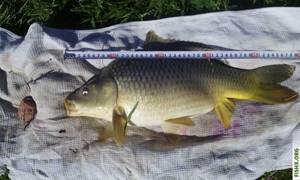
Corn as bait
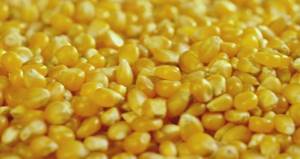
Corn plays a very important role in groundbait. Thanks to its bright color, it is clearly visible on the bottom and perfectly attracts and holds large fish. Having a low weight in water, corn holds even on muddy soil or a layer of algae. Nothing can replace corn, and its combination with hemp grains greatly increases the attractive properties of bait. The main thing is to prepare it correctly.
